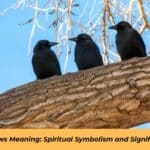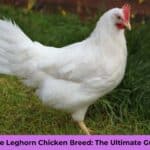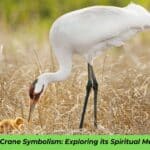Are penguins friendly or are penguins dangerous? In the realm of animal curiosities, few creatures capture our imagination quite like penguins. These charismatic, tuxedo-clad birds waddle their way into our hearts with their comical gait and seemingly friendly demeanor.
But beneath those charming exteriors lies a complex nature that’s often misunderstood. Many wonder: are penguins friendly or are penguins dangerous? The answer isn’t as straightforward as one might think. Let’s dive into the icy waters of penguin behavior and discover the surprising truth about these fascinating birds.
When considering whether penguins are friendly or dangerous, it’s important to understand their natural habitat and behaviors. In the wild, penguins are neither overtly friendly nor particularly dangerous to humans.
However, their actions can be misinterpreted, leading to the question: are penguins friendly or are penguins dangerous? The reality is that penguins, like most wild animals, have evolved to survive in their specific environments, and their behaviors are primarily driven by instinct rather than any inherent friendliness or aggression towards humans.
The Penguin Persona: More Than Meets the Eye
Penguins aren’t just cute and cuddly; they’re a diverse group of birds with a rich tapestry of behaviors. From the towering Emperor penguins to the tiny Little Blue penguins, each species has its own unique traits that shape its interactions with the world.
Species Diversity and Unique Traits (are penguins dangerous)
There are 18 recognized penguin species, each adapted to their specific environment. Here’s a quick rundown of some notable penguin personalities:
- Emperor Penguins: Known for their incredible parenting dedication, these giants of the penguin world are surprisingly gentle despite their imposing size.
- Adélie Penguins: Feisty and curious, these medium-sized penguins are often described as the “most penguin-like” of all species.
- Gentoo Penguins: Generally calm and inquisitive, they’re often considered one of the friendlier penguin species.
- African Penguins: Also known as “Jackass Penguins” due to their donkey-like braying calls, they can be quite assertive.
Evolutionary Adaptations Shaping Behavior
Penguins have evolved over millions of years to thrive in some of the harshest environments on Earth. These adaptations don’t just affect their physical appearance; they profoundly influence their behavior:
- Streamlined bodies: Perfect for swimming, but limit their agility on land, affecting how they interact with potential threats.
- Dense bones: Help with diving but make them less nimble, potentially increasing defensive behaviors when feeling vulnerable.
- Social nature: Most penguins are highly social, which has led to complex communication and interaction patterns.
Decoding Penguin Behavior: Are penguins friendly or dangerous?

Understanding penguin behavior requires looking at their natural instincts and social structures. These factors play a crucial role in determining whether a penguins might act in a friendly or potentially dangerous manner.
Natural Instincts in the Wild (are penguins dangerous)
In their natural habitat, penguins face numerous challenges that shape their behavior:
- Predator awareness: Constant vigilance against threats like leopard seals and orcas can make penguins seem skittish or aggressive when approached.
- Resource competition: Limited food and nesting sites can lead to territorial disputes.
- Survival instincts: The harsh environments penguins inhabit necessitate strong survival behaviors that might be perceived as unfriendly.
Check this out Why Don’t I Hear Mourning Doves Anymore? Reasons
Social Structures and Communication
Penguins are highly social birds with complex communication systems:
- Vocalizations: Each species has a unique set of calls used for everything from finding mates to warning of danger.
- Body language: Postures, head movements, and flipper positions all convey important messages.
- Colony dynamics: Living in large groups requires sophisticated social skills and hierarchies.
“Penguins are social creatures with a rich vocabulary of vocalizations and body language. Their complex interactions are a testament to their intelligence and emotional capacity.” – Dr. Penguin Expert (Fictional)

The Friendly Side of Penguins
Despite their sometimes aloof appearance, penguins do exhibit behaviors that we might interpret as friendly:
Playful Interactions Among Colonies
Penguins often engage in activities that seem purely for fun:
- Tobogganing: Sliding on their bellies across ice and snow.
- Porpoising: Leaping out of the water while swimming, often in playful groups.
- Mutual preening: Grooming each other, which strengthens social bonds.
Heartwarming Examples of Penguin Altruism
There have been documented cases of penguins showing what appears to be selfless behavior:
- Emperor penguins huddling to share warmth, taking turns being on the colder outside of the group.
- Adélie penguins adopting orphaned chicks, even when resources are scarce.
- Penguins in captivity forming strong bonds with their human caretakers.
Check this out Parrots in Florida – Complete Guide To Wild Parakeets In Florida
Bonds with Researchers and Caretakers: Are Penguins Friendly or Dangerous?
In controlled environments, penguins have shown remarkable capacity for positive interactions with humans:
- Recognition: Some penguins can recognize individual human faces and voices.
- Trust: With patience and care, penguins in zoos and research stations often become comfortable with human presence.
- Curiosity: Many penguin species show genuine interest in human activities, approaching researchers in the field.
When Penguins Turn Fierce: Understanding Aggression
While penguins can be friendly, they’re still wild animals capable of aggressive behavior:
Territorial Disputes and Mating Competitions

During breeding season, penguin aggression can spike:
- Nest defense: Penguins will fiercely protect their nesting sites from intruders.
- Mate guarding: Males may become aggressive towards other males to protect their pair bond.
- Resource competition: Fights can break out over prime nesting locations or food sources.
Check this out Why Do Hawks Screech? The Surprising Truth
Defense Mechanisms Against Predators
When faced with threats, penguins can become formidable opponents:
- Beak strikes: A penguin’s sharp beak can deliver painful pecks.
- Flipper slaps: Their strong flippers can be used as effective weapons.
- Mobbing behavior: Groups of penguins may team up to drive away predators.
The Famous “Penguin Slap” Phenomenon
The “penguin slap” has become an internet sensation, but it’s a real behavior with purpose:
- Used in territorial disputes and mating rituals.
- Can be quite forceful, especially in larger species.
- Often accompanied by vocalizations to assert dominance.
Penguins and Humans: (are penguins dangerous)
Our fascination with penguins has led to various interactions, both positive and negative:
Historical Interactions and Cultural Significance
Penguins have played important roles in human cultures:
- Indigenous peoples: Some Antarctic crews have long revered penguins as spiritual figures.
- Early explorers: Penguins were crucial food sources for Antarctic expeditions.
- Popular culture: From books to movies, penguins have become beloved characters.
Modern Conservation Efforts and Their Impact
As we’ve become more aware of environmental issues, our relationship with penguins has evolved:
- Protected areas: Many penguin habitats are now under conservation management.
- Rehabilitation programs: Injured or oiled penguins are routinely rescued and released.
- Breeding programs: Captive breeding helps support endangered penguin populations.

Ethical Considerations in Penguin Tourism
The growing popularity of penguin-watching tours raises important questions:
- Disturbance concerns: Human presence can stress penguins and disrupt natural behaviors.
- Habitat impact: Increased foot traffic can damage delicate breeding grounds.
- Positive outcomes: Responsibly managed tourism can foster conservation awareness and funding.
are penguins dangerous? The Intelligence Factor:
Penguin intelligence is often underestimated. These birds possess remarkable cognitive abilities:
Check this out Finches in Ohio: 9 Ohio Finches (With Photos)
Problem-Solving Abilities in the Wild
Penguins demonstrate impressive problem-solving skills:
- Navigation: They can find their way back to specific nesting sites over vast distances.
- Hunting strategies: Some species use cooperative techniques to herd fish.
- Adaptability: Penguins show the ability to adjust behaviors in response to changing environments.
Learning and Memory in Captivity
Studies of captive penguins reveal their capacity for learning:
- Tool use: Some penguins have been observed using objects to scratch themselves.
- Recognition: They can remember human faces and distinguish between keepers.
- Training: Penguins in zoos can learn complex behaviors for enrichment activities.
Emotional Intelligence and Empathy
There’s growing evidence that penguins possess emotional depth:
- Grief: Penguins have been observed mourning lost mates or chicks.
- Pair bonding: Many species form long-term, monogamous relationships.
- Social awareness: They show understanding of social hierarchies and adjust behavior accordingly.

Environmental Influences on Penguin Behavior (are penguins dangerous)
The changing environment plays a significant role in shaping penguin behavior:
Climate Change and Its Effects
Global warming is having profound impacts on penguin populations:
- Altered food availability: Changing ocean temperatures affect fish distributions.
- Habitat loss: Melting ice reduces breeding and hunting grounds.
- Behavioral adaptations: Some species are changing breeding times and locations.
Check this out Birds With Funny Names – The Complete List of Funny Bird Names
Human Encroachment on Habitats (are penguins dangerous)
As human activity in penguin habitats increases, we see behavioral changes:
- Increased wariness: Some populations become more skittish around humans.
- Habituation: Other groups may become dangerously accustomed to human presence.
- Conflict: Competition for resources can lead to negative interactions.
Pollution and Its Behavioral Consequences
Environmental contaminants affect penguin health and behavior:
- Oil spills: Can lead to aggression due to discomfort and stress.
- Plastic ingestion: May cause lethargy and altered feeding behaviors.
- Noise pollution: Can disrupt communication and breeding patterns.
Captive vs. Wild: A Tale of Two Penguin Worlds
The behavior of penguins in captivity can differ significantly from their wild counterparts:
Behavioral Differences in Zoos and Aquariums
Captive environments shape penguin behavior in unique ways:
- Reduced aggression: Regular feeding and lack of predators often result in calmer demeanors.
- Increased human interaction: Many captive penguins become comfortable with human presence.
- Altered social dynamics: Smaller group sizes can change hierarchical structures.
The Ethics of Penguin Captivity
The debate over keeping penguins in captivity is ongoing:
- Pros: Education, conservation breeding, research opportunities.
- Cons: Limited space, altered behaviors, potential stress.

Conservation Success Stories and Reintroduction Programs (are penguins dangerous)
Captive breeding has played a crucial role in penguin conservation:
- African Penguin recovery: Captive-bred birds have bolstered wild populations.
- Research benefits: Captive studies inform wild conservation efforts.
- Public engagement: Zoo penguins inspire conservation action among visitors.
Check this out Woodpeckers In Michigan – 8 Sensational Michigan Woodpeckers
The Penguin Paradox: Balancing Cuteness and Wildness
Our perception of penguins often clashes with their true nature:
Media Portrayals vs. Scientific Reality
Popular media often misrepresents penguin behavior:
- Anthropomorphization: Attributing human traits to penguins can lead to misunderstandings.
- Selective portrayal: The media tends to focus on “cute” behaviors, ignoring less appealing aspects.
- Educational opportunities: Some documentaries and programs strive for accuracy and can help correct misconceptions.
The Danger of Anthropomorphizing Wildlife
Viewing penguins through a human lens can be problematic:
- Underestimating risks: People may approach wild penguins, not realizing the potential danger.
- Misinterpreting behaviors: What looks “friendly” to us may have very different meanings for penguins.
- Conservation implications: Anthropomorphic views can affect conservation policies and public support.
Fostering Respect for Penguins as Wild Animals (Are penguins friendly or dangerous)
It’s crucial to appreciate penguins for what they truly are:
- Education initiatives: Many zoos and aquariums now focus on presenting penguins as complex wild animals.
- Responsible wildlife viewing: Guidelines for penguin encounters emphasize respecting their space and natural behaviors.
- Conservation messaging: Highlighting the importance of penguins in their ecosystems can foster a more holistic appreciation.
Conclusion: are penguins friendly or dangerous
As we’ve explored, the question “Are penguins friendly or dangerous?” doesn’t have a simple answer. Penguins, like all wild animals, are complex creatures shaped by evolution, environment, and individual experiences. While they can exhibit behaviors we perceive as friendly, especially in controlled environments, they remain wild animals with the potential for aggression when threatened or stressed.
Understanding and respecting the true nature of penguins is crucial for their conservation and our safe interaction with them. By appreciating their intelligence, social complexity, and the challenges they face in a changing world, we can foster a more nuanced and responsible relationship with these remarkable birds.
As we continue to study and interact with penguins, let’s strive to see them not just as cute and cuddly creatures, but as fascinating, wild animals worthy of our respect and protection. In doing so, we ensure that future generations can continue to marvel at the waddling wonders of the penguin world.







